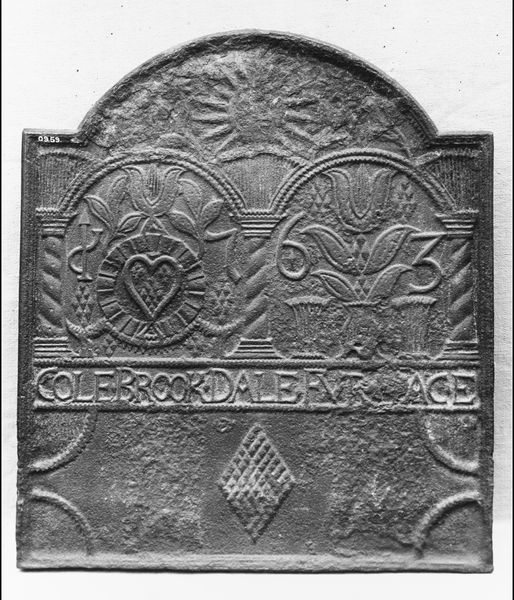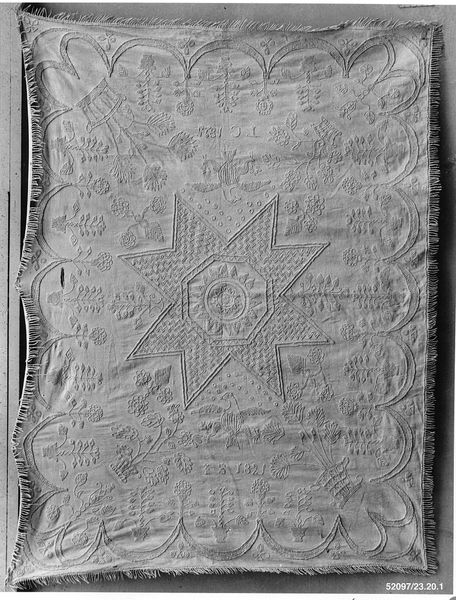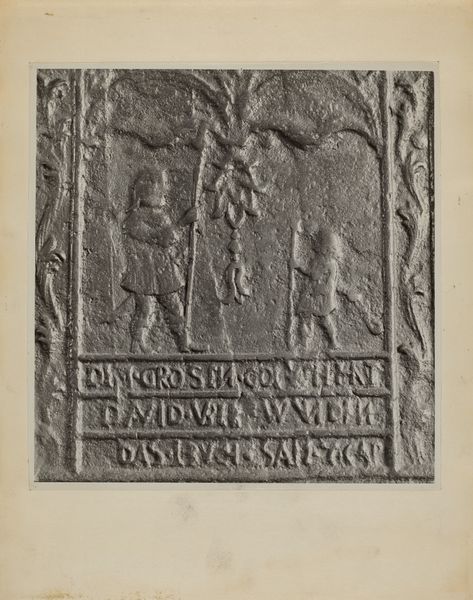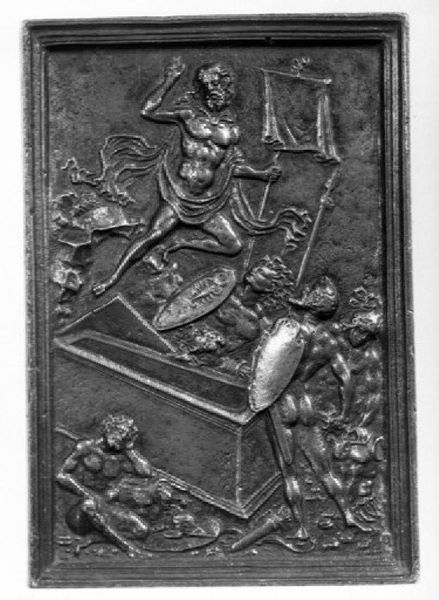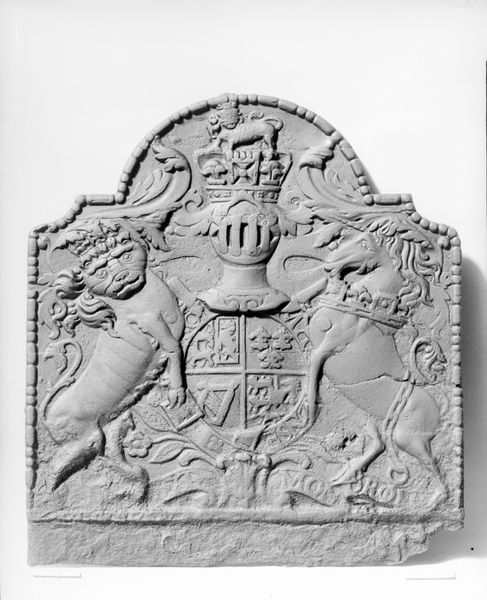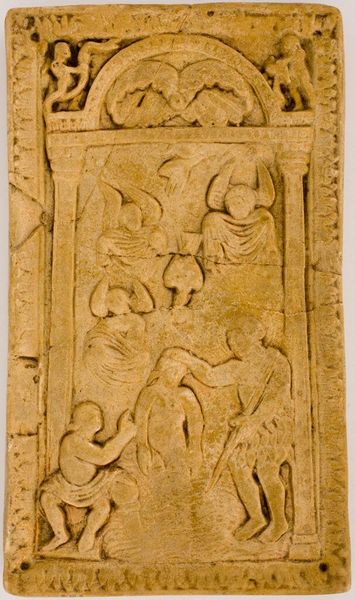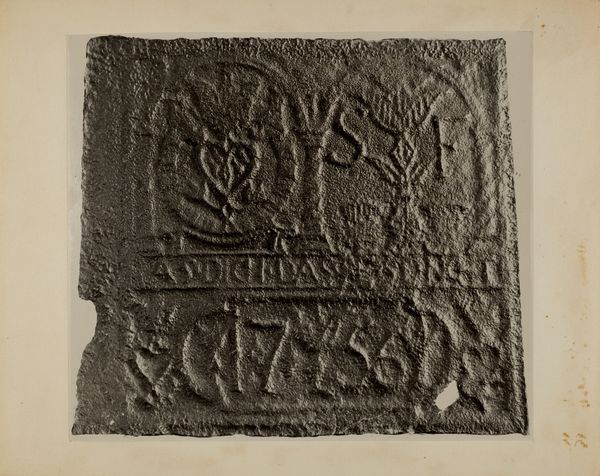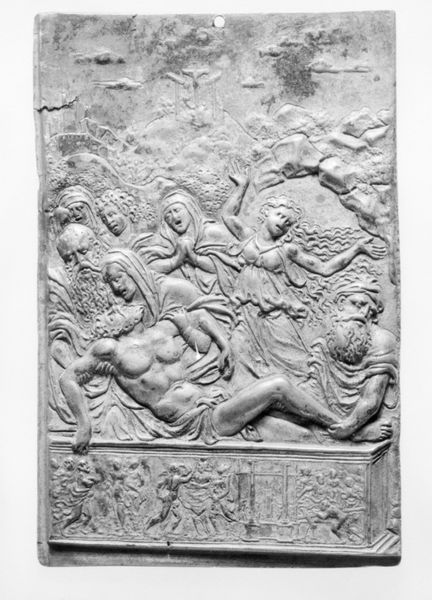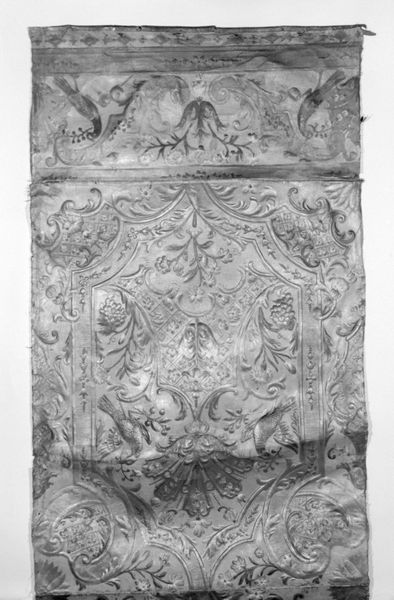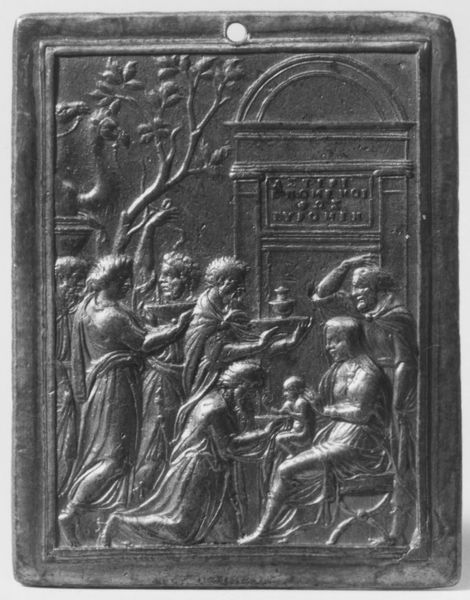
Dimensions: 22 1/2 x 19 in. (57.2 x 48.3 cm)
Copyright: Public Domain
This stove plate was made in 1765, by Henry William Stiegel, a German-American glassmaker and businessman. Stiegel was at the center of a burgeoning colonial economy. This piece offers insight into the cultural life and domestic practices of Pennsylvania Germans in the 18th century. The plate, likely cast in sand, blends Germanic folk art motifs, like the tulips symbolizing faith, hope, and charity, with the practical function of heating. The inscription "STIG.GEL.VND.K" likely refers to Stiegel’s name and the ironworks where it was made. Iron production played a crucial role in the economy of colonial Pennsylvania, enmeshed with questions of labor, land use, and transatlantic trade. These objects bring a sense of warmth and home, amidst the complexities of colonial life, inviting reflection on the narratives of community, craft, and commerce.
Comments
No comments
Be the first to comment and join the conversation on the ultimate creative platform.
